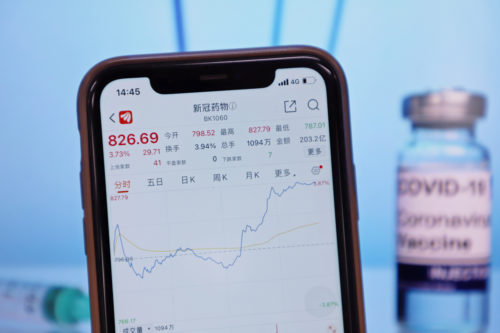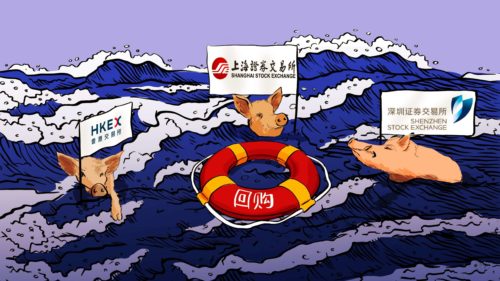Bad news is a lagging indicator
Maybe the news doesn’t actually help you to invest? In this week’s look at the Chinese stock markets, Gerard DeBenedetto finds that the markets have already moved on from the breaking news.

The efforts of Lǐ Kèqiáng 李克强 to boost the economy are meme-worthy. After confirming a 5.5% GDP growth number in March, the central government is committing to just about anything to buttress growth: Tax breaks, employee benefit subsidies, explicit loan growth requests, mortgage rate cuts, and more.
Local governments are becoming creative as well. GDP growth is calculated from the towns to the cities, from the provinces to Beijing, and nobody wants to be short. Shenzhen, for example, announced government subsidies for purchase of electric vehicles, computers, smartphones, and wearables. Not to be outdone, Shanghai released a 50-measure action plan to help companies recover from the most recent COVID lockdown. Nudging consumption doesn’t always work, but local municipalities are keen to contribute lest they be responsible for the GDP shortcoming.
Some initiatives take longer to clock material impact, but foreign banks are not impressed, as they’ve taken consensus on China GDP growth down to 4.2%. The parade of bad news coming from seemingly everywhere in the past few weeks includes double-digit retail sales declines, real estate sales tumbling, and unemployment rates at a multi-year high.
Curiously, when Li began touting all the stimulus, the stock market was down more than 1.5%, only to reverse course and finish up 60 basis points for the day. Yes, the CSI 300 (the major market index) is down 19% YTD and down 31% from its multi-year high in February 2021, but it’s up 6.4% in the last month, coinciding with the steady drip of bad economic data.
The price earnings ratio of the CSI 300 is 12.36 and many of those companies are mature and profitable, and pay dividends. The index traded in the U.S. via ASHR has a current dividend yield of 1.16%. Allocators looking to target even higher yields can pick up financials like Ping An Insurance, ICBC, or China Merchants Bank with dividend yields of 5.28%, 4.12%, and 3.26%, respectively.
A final note on the fast-moving regulatory environment for Chinese companies listed in the U.S. Recall that the SEC’s accounting body, the U.S. Public Company Accounting Oversight Board (PCAOB), is systematically requesting transparency regarding the audit of 148 such companies, including Chinese ecommerce giants Baidu, Pinduoduo, and the ubiquitous restaurant group Yum China Holdings, which operates KFC, Pizza Hut, and Little Sheep hotpot in China. Both regulators are hoping for an agreement, but some companies are taking the wheel and listing their shares in Hong Kong and perhaps eventually the mainland. For investors, regulatory risks are difficult to model, so if you are inclined to dip into such companies, look for those names that migrated to Hong Kong or listed there initially such as Alibaba or Tencent. Last week, Alibaba released excellent earnings and in the ensuing trading days rebounded almost 18% in Hong Kong.
Mainland stocks follow a policy-first pattern, where everything else — news, earnings, company management, and competition — is a distant second. As the negative macro news trickles in and the major market index ticks higher, it does look like news is a lagging indicator as mainland investors begin more buying than selling.
A-Share Intelligence is a weekly column.






